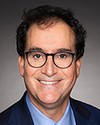I want to put on the record, as an economist and as someone who spent over 20 years working both on Wall Street and on Bay Street, that I look at the change in the capital gains inclusion rate as the right thing to do. The IMF has stated, just to put this on the record, “The...inclusion rate improves the tax system’s neutrality with respect to different forms of capital income and is likely to have no significant impact on investment or productivity growth.” Following that, you can read the remarks from the University of Toronto's Michael Smart, a professor of taxation economics.
I've often argued that we needed to change or do away with a thing called “surplus stripping”. It's basically a tax avoidance strategy where folks take advantage of the differential tax rates in our system. A tax system needs to be neutral, efficient, fair and progressive. This change in the capital gains inclusion rate, not the effective tax rate, moves us in that step. For a government showing responsible leadership, this is the right thing to do from a tax system...to make it more neutral, efficient, fair and progressive and to help middle-class Canadians and seniors. Two million seniors have signed up and been approved for our dental care program, and more than 200,000 have gone to see the dentist. It provides for pharmacare, diabetes medication, contraceptives for women, child care, the national food benefit, things that Canadians need and use every day.
I would like to go to Mr. Stefanec next.
Thank you for opening your business. Thank you for being in the trades. My understanding is that you're in the plumbing business. In Canada, we have a small business tax with a very favourable rate of 9% that small businesses enjoy. That is something we reduced from 11% to 9% in the early part of our mandate.
In addition, with regard to a corporation, you'll have different forms of income in your corporation. You'll have interest if you invest in that, as well as dividends. You'll also have the opportunity to use the registered retirement savings plans and TFSAs for your retirement.
I just wanted to confirm whether you have used an RRSP program or a TFSA program to also fund your retirement.





